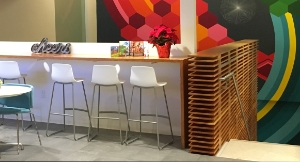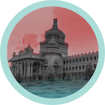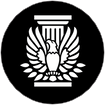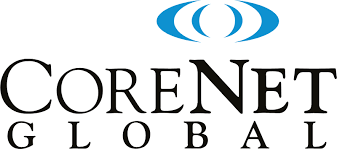So, What Do You Do?

We're here to get your workplace into shape
Welcome to 2019! We hope your holiday season was restorative, and that you’ve already hit the ground running in the new year. Did you know we take requests? It’s true! In response to a curious fellow reader, we’re using this month’s “On Our Minds…” to shed some light on what we mean when we talk about improving workplace performance—and how we get it done. Scroll on down, won’t you?
On our minds
January is a time for fresh starts—for returning to the well, so to speak. The ebbing of the daylight hours (featured in our December installment) is now behind us, and each day offers a little more light than the one before. Forgive us for waxing poetic; it’s a holdover from a month of holding court!
If your holiday season was anything like our own, it’s most salient feature was parties, almost all of which included some version of that shop-worn staple of cocktail party banter: "So, what do you do?"
In the early days of PLASTARC, our answers to this question generated some raised eyebrows and quizzical "mm-hmmm's" at the usual mixers. After all, what is a workplace consultancy based on social science and mixed-methods research? What does it mean to apply data science techniques to the performance of spaces?
Fast forward a few years, and we’re happy to report that reception has warmed while more and more folks are getting hip to the organizational benefits of people-centric workplaces. Our November 2017 newsletter first looked at some of the ways workplace transformations can fall short when they are based on assumptions or partial information rather than a firm foundation of research and data. Sometimes, though, the in-built complexity of what we do might still leave some folks curious.
In the spirit of renewal that befits the season, let’s take a crack at an explanation right now, eh?
Say you made a New Year’s Resolution to compete in your first triathlon this year: good on ya! How are you going to actually accomplish that? You may be exceedingly determined and reasonably fit, but that alone isn’t going to be enough to prepare you. You need to get stronger. A training plan that ignores the current reality is useless; extreme interventions often do more harm than good.
Unless you happen to be a trainer or nutritionist, the best solution is to find an expert or two who will objectively evaluate your current performance and develop a strategy to help you improve. Are tight hip flexors shortening your stride? Is a protein-heavy diet putting stress on your metabolism? Using a holistic approach and the best nutrition and exercise science available, you would work as a team to bring your body’s performance in line with your goals.
We do something similar at PLASTARC, but for businesses and buildings. Since our founding, we’ve been motivated by the notion that buildings and people have a complex and symbiotic relationship. For too long, that relationship has been lopsided. People have had to adapt their behavior to the spaces they are in, when it really should be the other way around.
The physical environment that people occupy has an immutable impact on our wellbeing and how we behave in relation to one another. Access to natural lighting, for instance, has a demonstrable effect on human health and performance. Science reminds us that people and plants have more in common than you might think—even beyond the basic needs of daylight, fresh air and water. Shouldn’t that be part of the design conversation? People also shape their own spaces through real estate, design, and policy choices. We strive to bring this system into alignment with the organization’s goals by supporting the occupants’ needs. PLASTARC is dedicated to shifting the workplace conversation from square feet and inches to satisfaction and performance.
In much of our work, we deploy unique tools we’ve developed to gather and analyze workplace data—surveys, observational analysis, interviews, and workshops that combine three modes of inquiry:
Anthropological: We 'live' with our clients, experience their workplace as they do, studying their environment and behavior to collect insights into how they use spaces.
Analytical: We are constantly quantifying what we discover, using the latest building technology and measurement tools.
Academic: We interpret cognitive science and environmental behavior literature to enable research-driven design recommendations.
We admit it; we’re nerds about this stuff. When we hear about a workplace trend like hot desking, our first instinct is to reach for the slide rule. Does a proposed change to a space measurably improve the performance and satisfaction of the people in it? Is that effect replicable? How can the value of that be quantified and demonstrated? Is it worth the investment? What investments in spaces will provide the best return on investments in people?
The end result of this approach—which won us an award for Most Innovative Use of Data at Wharton's People Analytics Conference last year—is a people-based business case for workplace transformation. We provide pre-design input to an architecture team to ensure that a new space will fit the work style, culture, and human needs of the people who will actually use them.
The sustaining workplace change aspect of our work, admittedly, stretches our marathon analogy further—call it cross-training. We also use these tools post-move-in to advocate for changes that will make existing spaces function better. For instance, we might advise a client on the potential benefits of adopting flexible workspaces, as we did with a global peacekeeping organization. We help our clients to navigate the human side of these transformations through our change management practice, as we did in our recent training program with GSA.
It should go without saying that building performance, like physical fitness, is not a one-time investment. Custom advisory services are often based on our unique expertise, not just methods. For example, our long history of studying coworking enabled us to advise Verizon on their global expansion of coworking-style innovation spaces.
The common element in everything we do is the relationship between spaces and human beings. Just like nutrition and physical activity, considering them in isolation will never yield an optimal state; you have to leverage the entire system.
Another major aspect of our approach, is our constant engagement of the latest and greatest technology, for both research and workplace improvement. Another wellness corollary, the range of options for self quantification to advance our physical fitness, from Nike Fuel and Fitbit to innumerable foodie apps, has been accelerating for most of a decade. You could say we are now entering a golden age of building technology and analytics, as exemplified by the 5G coverage at this year's Consumer Electronics Show (CES).
This combined capability will bring us to new levels of connecting building features, human behavior and organizational performance. For example, web designers have long had the ability to analyze the behavior of users based on design changes, asking questions like, "Does changing the color of the shopping cart cause more people to buy?" Now, architects and designers are in position to do the same with their occupants. How will we use that capability to make buildings better for people?
We like to think we’re making work better for everyone through great workplace. Hopefully, you agree!
From the archives
PLASTARC just turned six! If you weren’t privy to our missives this time last year, you may have missed our holiday greeting, in which we also celebrated our landmark five-year anniversary.
Let’s go back further...much further. How about the first century B.C.? We spoke to DisruptHR in 2016 about "Building a Healthy Workplace," citing inspiration from Roman architect Vitruvius. He would’ve been thrilled by our newfound ability to measure delight. Catch the replay here.
That same year, we presented a webinar about flexible workspaces with Condeco. We touched on the defining characteristics of flexible workspaces, why they are better for users, and of course, "how buildings learn".
Now, if you’ll excuse us, the treadmill beckons. We’re only a reply button away if you want to chat about how to whip your workplace into shape—or if you’re looking for a new bike-swim-running buddy.
In Case You Missed It
From startup pitch nights to coworking cogitation, there was plenty on offer for the workplace transformation-minded set. These were a few of our faves:

Welcome to 2019!
We send our holiday wishes to our friends, colleagues, and collaborators around the world. Thanks for another great year!

Verizon Palo Alto Launch
Our long-time friends at Verizon opened their newest coworking facility to great fanfare at this inspired evening of startup pitches.

Remix, Resample, Remaster: Identity Architecture
This panel focused on the intersection between activism and architecture, emphasizing the role of architects in shaping places worth being.

AIA Coworking Panel
PLASTARC moderated this AIANY panel to explore the ongoing evolution of coworking models; a collaboration between Interiors, Social Science and Marketing committees.
Looking Ahead
We’re looking forward to big things this year—the next few months are full of opportunities to share ways of making the world a better place through workplace. Here’s a modest selection:





